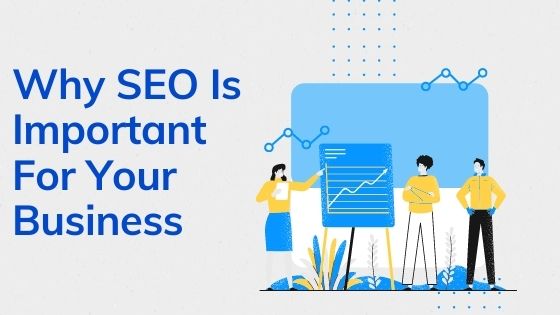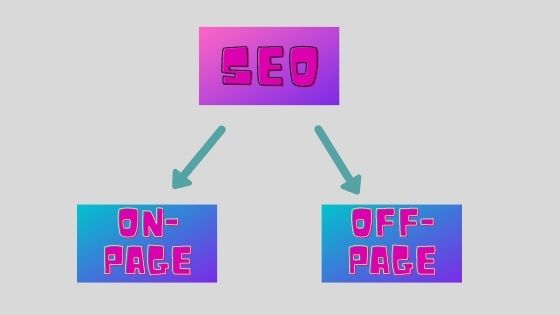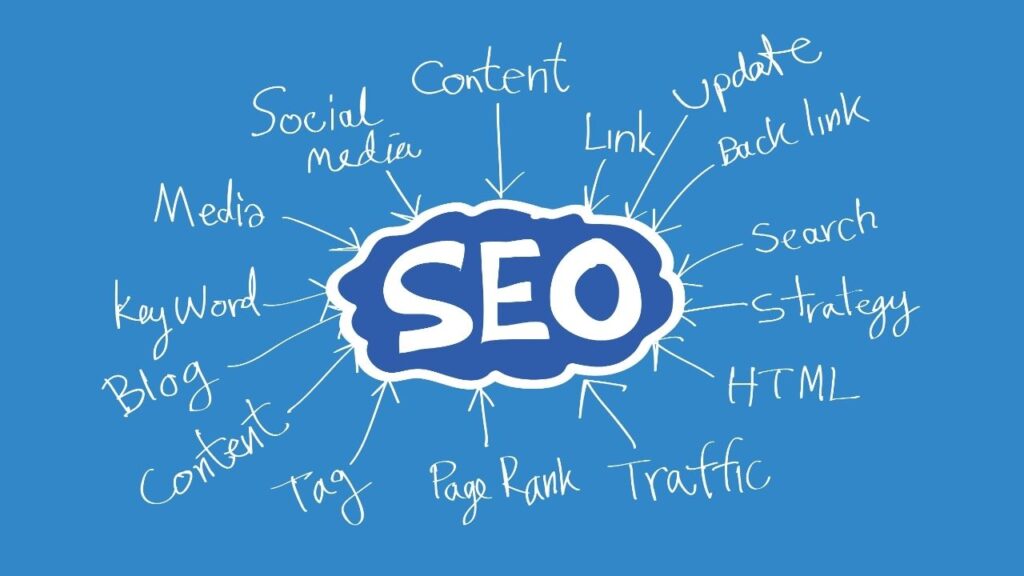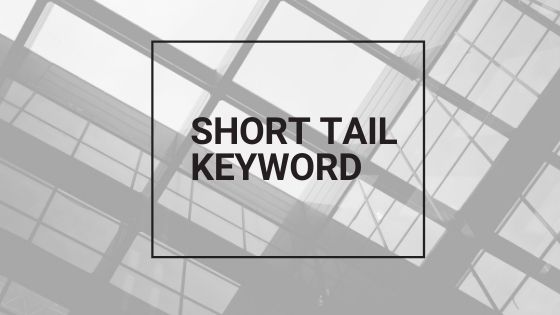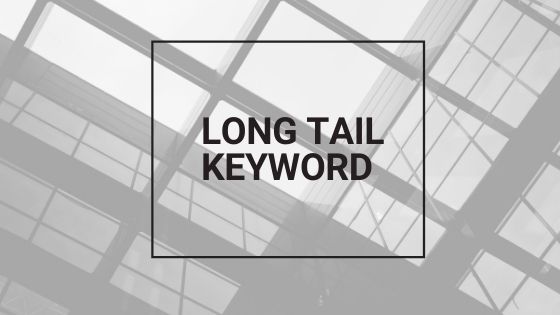Let’s Understand The Term SEO
SEO stands for “search engine optimization”, which is the process of increasing both the quality and quantity of website traffic. In simple words, it is a way of improving the rank of a website as high as possible in Google. Top Ranked Sites on Google bring more visibility and traffic to the site that ultimately increases the sales and generate business
What Is The Importance of SEO
- Optimization promotes qualified web traffic and better results in ranking
- SEO increases the visibility of the website, thus creating awareness among the readers
- SEO increases searchability of the page and engage the audience
- After optimizing any website more chances are there to converts prospects into customers
What Are The Types Of SEO
1.On-Page Optimization
On-Page Optimization refers to all measures that be taken directly within the website in order to improve its position in search engine rankings. It includes controllable factors like content quality, page performance, content structure, etc., that helps to rank higher and earn more relevant traffic in search engines.
2.Off-Page Optimization
Off page SEO is the activities taken outside of your website to impact your ranking within search engine result page (SERP). It mainly focuses on increasing the authority of your domain through content creation and earning backlinks from other websites.
We need to know all steps that can be taken directly within and outside the website in order to improve its position in the search rankings. The steps are very important in earning relevant traffic in search engine. So there are some checklist to learn how to optimize your pages and make your content more attractive to search crawlers. Let’s learn the important SEO checklists for any website.
Important SEO Checklists For Any Website
On-Page SEO Checklists And Best Practices
- Keyword Research
- Title Tag
- Meta Description
- URL Structure
- Headings
- Infrastructure
- Breadcrumbs (Paths)
- Alt Text
- Anchor Text (Internal/External linking)
1.Perform Keyword Research To Find Top Keywords
Keywords are the ideas, phrases and search queries, user do to find any product, service or information from internet. This works as search criteria for search engines. This is a very important step in driving traffic to your site.
Let’s Know The Types Of Keywords
How Keyword Research Is Done
1.Brainstorm-Perform keyword research to find the top keywords
2.Refine-Discuss with friends/family to get idea how frequently your target audience searching that keyword
3.Google Search-Google Suggestion & Google Relevancy
To know more in detail, visit : KEYWORD RESEARCH PROCESS
Use Tools To Perform Keyword Research
Tools are very helpful to find highly potential keywords. Some Keyword Search Tools To Choose Appropriate Keywords are:
• Ubbersuggest – Free + Pro
• Google trends- Free
• Quora- Q/A
• Google Keyword Planner- Free
• SEMRush- Free+Pro
• MOZ.com
Tips For optimizing The Keyword Research
⦁ Choose one keyword relevant to the main topic or theme of the content
⦁ Check for the search volume by your target audience
⦁ Write a title that includes primary keyword. Put the title in H1 tag
To know more about Keyword Research in detail, visit : KEYWORD RESEARCH IN 2020
2.Give Unique Title Tag For Every Page
Title tags are displayed on search engine results pages (SERPs) as the clickable headline for a given result, and are important for usability, SEO, and social sharing. It informs search engines about the relevancy of the keyword or key phrase for your website. It should give an idea of what the page content is all about.
Tips For Optimizing The Page Title
⦁ Format : Primary Keyword-Secondary Keyword I Brand name
⦁ Put the Title in H1 tag and begin with the primary keyword
⦁ Title should be should be unique, readable and attractive
⦁ Ideal length should be 50-60 characters
⦁ And avoid greeting words like “hello” “welcome” and use symbols like [], {}, () etc. if needed
⦁ You can use native language for local traffic
3.Write Engaging Meta Description
Meta description describes and summarizes the contents of your page and is shown on the SERP(search engine result page) by Google. Good meta description will compel the user to go through your page, thus increasing your CTR (click-through rate).
Tips For Optimizing The Meta Description
⦁ Write engaging meta description, providing proper information of your products and services
⦁ Ideal length should be in between 140 to 160 characters
⦁ Should contain the primary keyword & secondary keywords
⦁ Mention special offers, deals, discounts, and selling points
4.Use SEO Friendly URL Structure
A URL(Uniform Resource Locator) is a human readable text that identifies the file structure on the given website . A URL consists of a protocol, domain name, and path.
Tips For Optimizing The URL Structure
⦁ URLs, while not as important in search engine rankings, are important in providing both humans and search engines an indication of what the destination page will be about.
⦁ URL that includes keywords can improve your site’s search visibility
⦁ Good URLs are simple, short and SEO friendly
⦁ 2,083 characters are allowed but ideal length is 115 characters
5.Check Your Page Headings
Heading tells the reader what the content is about. People are more often attracted towards text with good and proper heading. It makes easy for the reader to get an idea of the article or post without entering into it.
Tips For Optimizing The Page Headings
⦁ Header tags should be put in descending order from H1-H6, with H1 being the most general heading and H6 being the most specific subheading.
⦁ The H1 tag is the important element on a page and it usually has the same value as the page title.
⦁ You can use your primary keyword on H1 and H2s as needed.
⦁ No need to use all heading types on a page. You can have the headings, depending on the length and type of your content.
6.Improve Your Infrastructure
Infrastructure refers to site navigation or site hierarchy. This makes easier for the visitors to find what they want and search engines to crawl. This really helps in SEO performance. This gives user a trouble-free experience in finding stuff on your site.
Tips For Optimizing The Website Navigation
⦁ Site navigation should be proper. Users should not get confused about your website.
⦁ The categorization and sub-categorization of content should be properly given so that it will help pages improve in rank for general head terms and for specific long-tail terms.
7.Make Proper Implementation of Breadcrumbs
Breadcrumbs is the path that help users understand where they are on a website. They make navigation easier. This usually helps the user to track their location on a site and engage them in visiting more pages of that website.
Tips For Optimizing The Website Navigation
⦁ Breadcrumb menus should be enabled and visible to the users.
⦁ It should be made properly without creating confusion as it shows the path to go from the current page back to the homepage.
⦁ If properly made, gives good user experience
8.Use Appropriate Alt Tags
The purpose of this is to show appearance and function of an image on a page to visitors who are unable to see them. It includes users who are sight-impaired or otherwise unable to visually identify an image. This also allows search engines to better crawl and rank your website.
Tips For Optimizing the Image Atl Tag
⦁ Adding alternative text to photos is the most important principle of web accessibility.
⦁ All images should contain proper alt tags. This will be displayed in place of an image if an image file cannot be loaded.
⦁ People using screen reader will also get a better understanding of the image.
9.Internal Page Linking With Anchor Text
Anchor text is a clickable text in a hyperlink that links to another location or document on the web. It allows the user to navigate through the website and informs search engines that the page is relevant for that keyword phrase.
Tips For Optimizing the Anchor Text
⦁ Your primary keyword can be used as anchor
⦁ When linking to another page on the same site from within content, select good anchor text (keywords) to use in the actual link and do this often
Get more idea on On-Page SEO, visit : ON-PAGE OPTIMIZATION TECHNIQUES
Off-Page SEO Checklists and Best Practices
1.Reviews/Testimonials/Recommendation
2.Social Signals
3.Backlinks
1.How To Get Benefit From Reviews
Online customer reviews or feedbacks are important in letting know the search engines about your page’s authority and trustworthiness. This gives a clear picture of what your business is doing. It acts as a major factor in driving traffic to your website. It matter a lot as it shows how engage you are with your audience. This shows you really care about your customers sentiment.
Tips For Optimizing The Reviews
- The most important step here is you must provide great service to your customers sothat you can collect high quality reviews
- Try to collect reviews and install rich snippets on your website. This will transform your listings in the SERPs. They’ll appear as Rich Results listings, which means any reviews you’ve collected will show up as golden stars underneath your listing.
- Increase the interaction by responding to the reviews so that search engines get a fresh and updated website to crawl
2.How Social Signals Helps
Social signal refer to a webpage’s collective likes, dislikes, shares, votes, pins, views, etc. that contribute to a page’s organic search ranking and are seen as another form of citation, similar to backlinks. They help to showcase popularity and affinity for a specific piece of content. They are nothing but activities of how people interact with a brand’s content on social media platforms like Facebook, Twitter, LinkedIn, Reddit, Medium, etc.
Tips For Optimizing The Social Signals
- Use valid and informative content that will help you gain interaction and increase content reach
- Use indexation that can lead to more search traffic and improved rankings
- Optimize your social media profiles and make sharing of content easy for the users
- Optimize your image for SEO as well as social platforms
- Build trust and relationship through interaction
3.What are Backlinks And How Do They Work
Link building is the process of getting other websites to link back to your website. In simple words, it refers to actions taken outside of your website to impact your rankings within search engine results pages. It helps users navigate between different pages on the Internet and thus it is very important to provide high quality links so that they don’t get disappointed.
Tips For Optimizing The Link
- Posting on guest sites that already have a huge audience is an easy way to draw traffic
- Mention a popular influencer in your post to get more links
- Search for a popular industry blog or influencer blog and scan the page for broken links. Let that blogger know their post has a broken link and here you can pitch for your blog post
- You can always ask for good backlinks from your friends, relatives or any known blogger
To know more in detail, visit : LINK BUILDING TECHNIQUES
Get more idea on Off-Page SEO, visit : OFF-PAGE SEO TECHNIQUES
That’s all about important SEO tips you will need for optimizing your website. Remember optimization is a must follow step for better productivity, reliability, efficiency of your website. It doesn’t matter how long or good is your content is, if it is not showing up in higher ranks. You must put effort in following all the optimization process so that your business gets visibility and popularity.
Let’s summarize the Complete SEO Checklist and Best Practices so that you get a quick idea of the whole thing :
⦁ Optimizing your page titles and meta descriptions.
⦁ Create SEO friendly URLs.
⦁ Add internal links to your content
⦁ Use headings to make your pages easier to read.
⦁ Optimize your image.
⦁ Improve your page speed
⦁ Get backlinks from other Websites
⦁ Improve the quality of your content
⦁ Update your website with fresh content
You can also refer to the below article for Important SEO Tips:
The 10 Most Important SEO Tips You Need to Know

